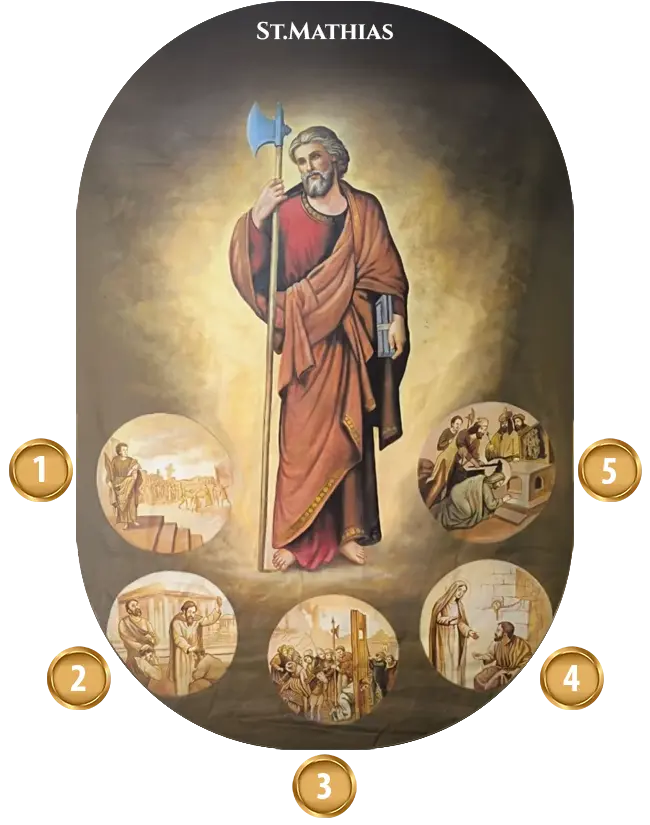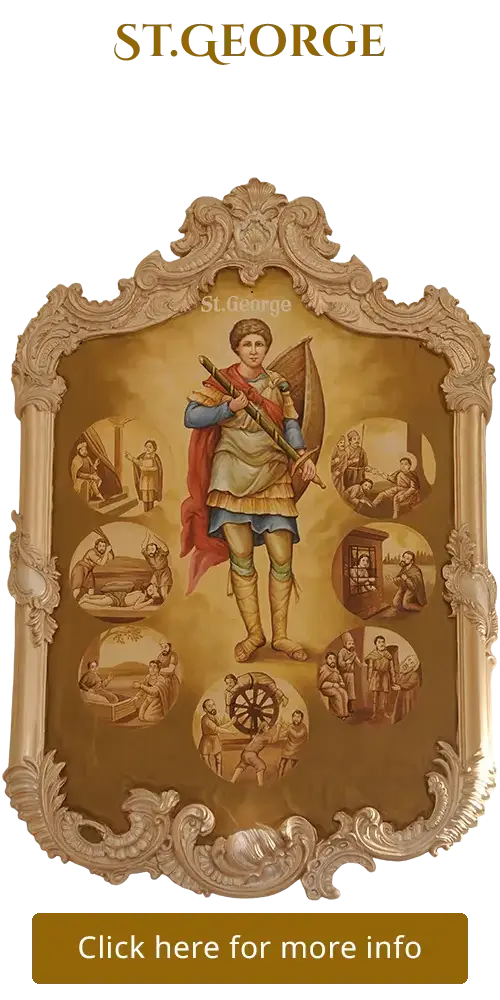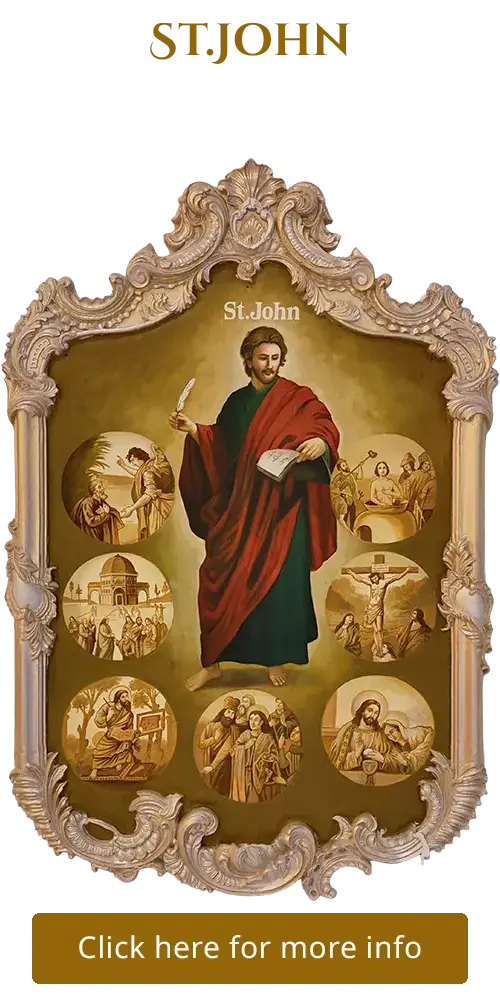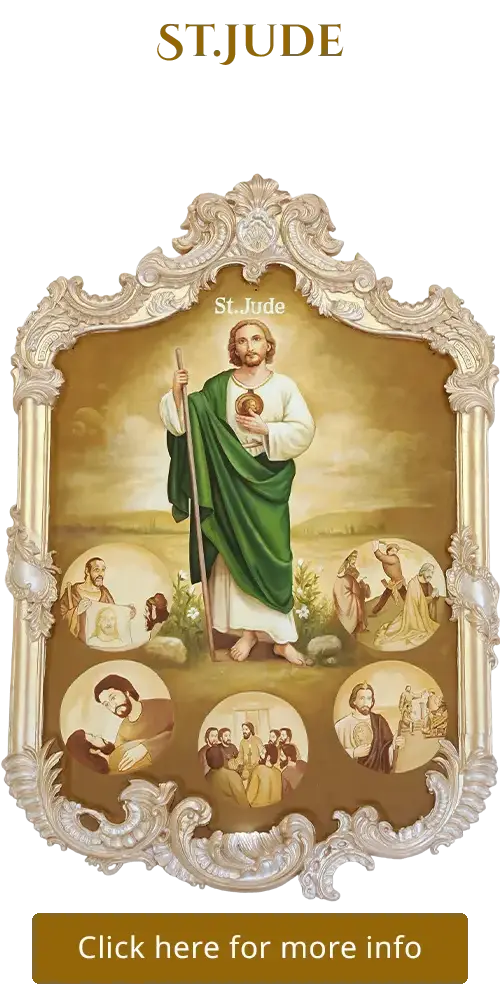St. Mathias
Inside Paintings - South Wall
St. Mathias



1. Selection as an Apostle
Biblical Reference: Acts 1:15-26
Description: After Jesus’ Ascension, the apostles gathered in Jerusalem. There were only 11 apostles left because Judas had betrayed Jesus and then died. Since Jesus had originally chosen 12 apostles to symbolize the 12 tribes of Israel, the remaining apostles believed the group needed to be restored to full number.
According to the Acts of the Apostles (Acts 1:15–26), Peter stood up among the believers (about 120 in number) and proposed that Judas should be replaced. The candidate had to (a) have followed Jesus during His ministry, from the baptism of John until the Ascension; (b) be a witness of the Resurrection.
Two men were put forward: (a) Joseph called Barsabbas – also called Justus; (b) Matthias.
The apostles prayed, asking God to show which of the two He had chosen. Then they cast lots (a common biblical practice for discerning God’s will). The lot fell on Matthias, and he was added to the eleven apostles, restoring their number to twelve.
2. Witness to Jesus’ Ministry
Historical Reference: Christian traditions
Description:
- Followed Jesus from the beginning of His public ministry (at least from John the Baptist’s baptism of Jesus in the Jordan).
- Remained with Jesus and the disciples throughout His preaching, miracles, and passion.
- Witnessed the Resurrection, which was the central testimony of the apostles.
- Was therefore considered a firsthand, reliable witness to Jesus’s life, death, and risen glory.
Even though he wasn’t part of the “Twelve” originally chosen by Jesus, Matthias had been a faithful disciple in the background all along. That faithfulness made him a fitting successor to Judas.
In short: Matthias’s qualification was his lived experience with Jesus’s entire ministry — he wasn’t a newcomer, but one who had quietly walked with Christ from the start.
3. Miracle in the temple of Gentiles
Historical Reference: Christian traditions
Description: St. Matthias, the apostle chosen to replace Judas Iscariot, preached the Gospel in pagan regions, often identified as Cappadocia or Ethiopia.
Matthias boldly entered a Gentile temple where idols were worshipped. Through the power of Christ, he performed a miracle that demonstrated the futility of the pagan gods: the idols either crumbled to dust or were rendered powerless before him.
This act of divine intervention shattered the false worship, leading many Gentile witnesses to abandon their idols and embrace Christianity, affirming Matthias’ apostolic mission to spread the Gospel among the nations.
4. Miracle of Melting Iron prison
Historical Reference: Later Traditions
Description: St. Matthias, chosen to replace Judas Iscariot as one of the Twelve Apostles, was imprisoned in the city of Bartus near Galatia for preaching the Gospel. According to Coptic tradition, while in prison, Matthias and other Christian prisoners prayed fervently. The Virgin Mary, informed by the Lord of Matthias’ plight, was carried to Bartus on a heavenly cloud. Upon arriving, she prayed at the prison gate, and through her intercession, God caused all the iron in the city – chains, weapons, and tools – to melt like wax, freeing Matthias and the other prisoners. This miracle, commemorated on June 28 (21 Paona in the Coptic calendar), led to the conversion of many, including the governor and his son, who was healed of demonic possession by Mary’s prayers. The iron was later restored to its solid state after her intercession, and Matthias baptized the city’s inhabitants, spreading the Christian faith.
5. Martyrdom of St. Matthias
Historical Reference: Early Christian tradition
Description: St. Matthias’s dedication to spreading the Gospel ultimately led to his martyrdom. According to tradition, he was martyred for his faith, though the exact details vary. One account suggests that he was stoned to death in Jerusalem, while another tradition holds that he was beheaded in Colchis (modern-day Georgia). His martyrdom is commemorated on May 14 in the Western Christian tradition and August 9 in the Eastern Orthodox tradition. His sacrifice for the faith underscores his commitment to Jesus and his role in the early Church







